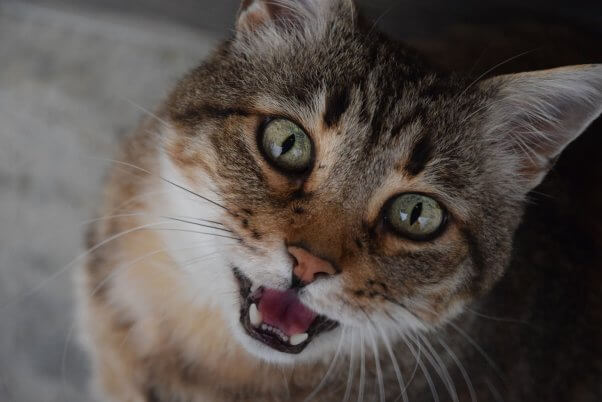Behind the Viral Videos: The ‘Cat Distribution System’ Exposed
What’s wrong with the “Cat Distribution System” concept that’s trending on TikTok and other social media platforms? It focuses on a few rare stories of homeless cats who’ve found suitable guardians and ignores the fates of millions of others who struggle to survive on the streets or in overburdened animal shelters that are bursting at the seams with cats in need of loving homes.
Did you know that there are an estimated 60 million to 100 million homeless cats in the U.S.? The popularity of “Cat Distribution System” videos misleads people into believing that the companion animal overpopulation crisis isn’t as serious as it truly is. And cats die as a result.
The “Cat Distribution System” Ignores Three Big Problems
- The lack of spaying and neutering: The best way to help end the companion animal overpopulation crisis is to spay or neuter your animal companions. One female cat and her offspring can produce a whopping 370,000 kittens in just seven years!
- Overpopulation and breeding: One significant factor contributing to the cat overpopulation crisis is the demand for “purebred” cats, such as Himalayan, Siamese, or sphynx cats. But there’s no such thing as a responsible breeder—because for every kitten bred into existence for profit, a homeless cat loses their chance at finding a home.
- Abandonment and free-roaming cats: Most feral and free-roaming cats are the descendants of cats who were abandoned outdoors. Although a small fraction of abandoned felines may find kindhearted individuals willing and able to provide them with a home, most are not so lucky. Abandoned cats and those who haven’t been socialized to interact with humans endure miserable lives, suffering from thirst, hunger, and exposure to harsh weather before dying due to illness, injury, starvation, human cruelty, or any number of other grisly causes. Cats forced to fend for themselves outdoors typically die before they’re 5 years old. Compare that to cats kept safe inside, who live 12 to 20 years.
The “Cat Distribution System” is the result of overpopulation, not the solution to a problem.
Fortunately, there are better ways to help homeless cats find loving, permanent homes. Here’s how you can become a responsible cat guardian and encourage others to do the same:
- Keep your cat indoors. The most important responsibility for a cat guardian is to keep their feline friend safe indoors, both for their own protection and for that of other animals.
- Educate yourself. Knowledge is power. Start by delving into resources like 250 Vital Things Your Cat Wants You to Know: The Cat Guardian’s Bible by PETA President Ingrid Newkirk. Understanding cats’ needs, the importance of keeping them indoors, and why spaying and neutering is vital empowers you to make informed decisions.
- Adopt—don’t shop. Cats can live to be 20 years old and require a lifetime of care. If you have the time, money, patience, commitment, and love needed to care for a cat for life, adopt one from an animal shelter. Giving a home to a cat in need helps reduce the strain on shelters.
- Advocate for spay/neuter. Have your animals sterilized, and urge everyone you know to do the same. Supporting and promoting spay/neuter initiatives in your community encourages friends, family members, and neighbors to take this responsible step to prevent more homeless animals from being brought into the world and contributes to the overall well-being of cats.


